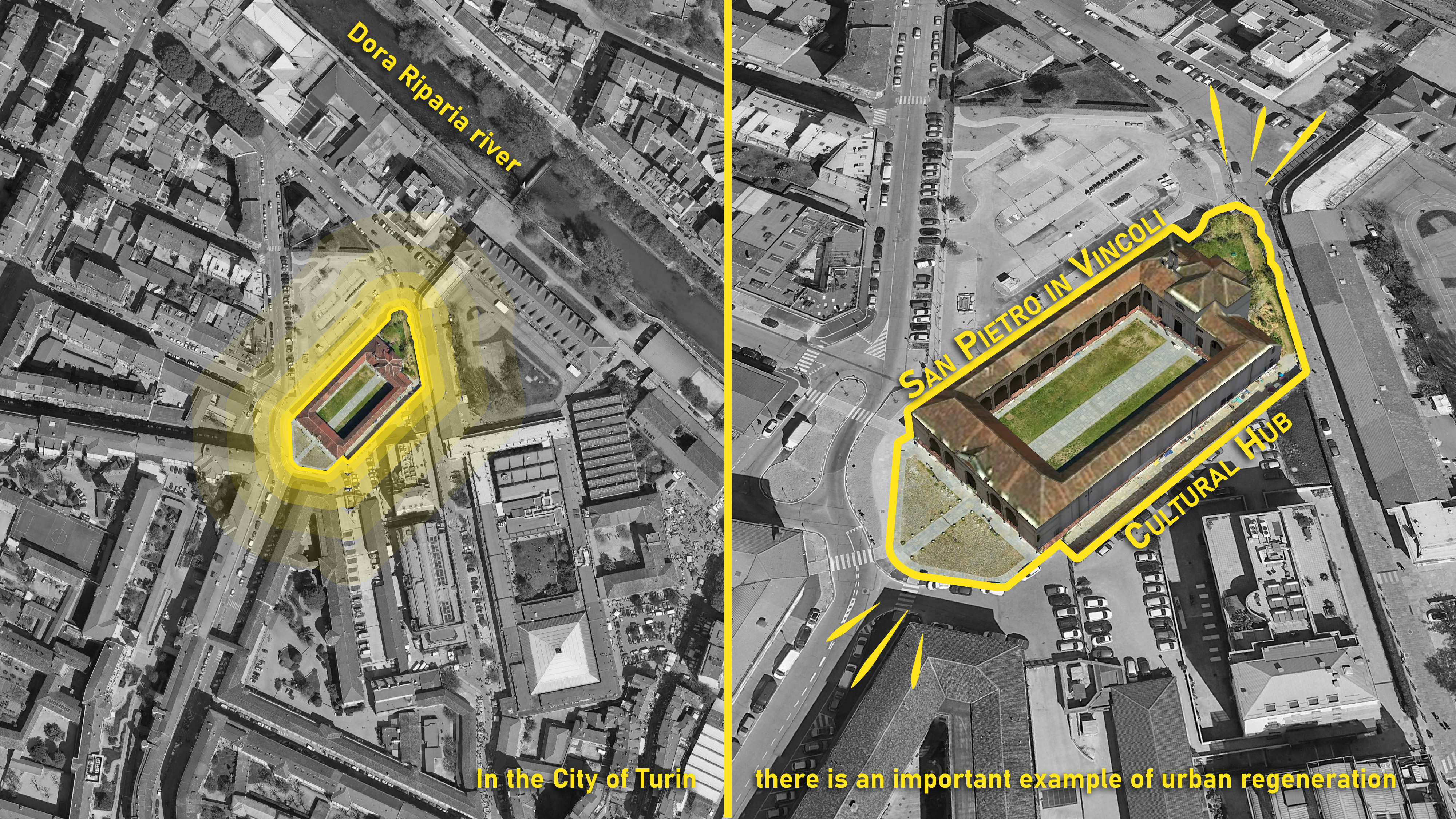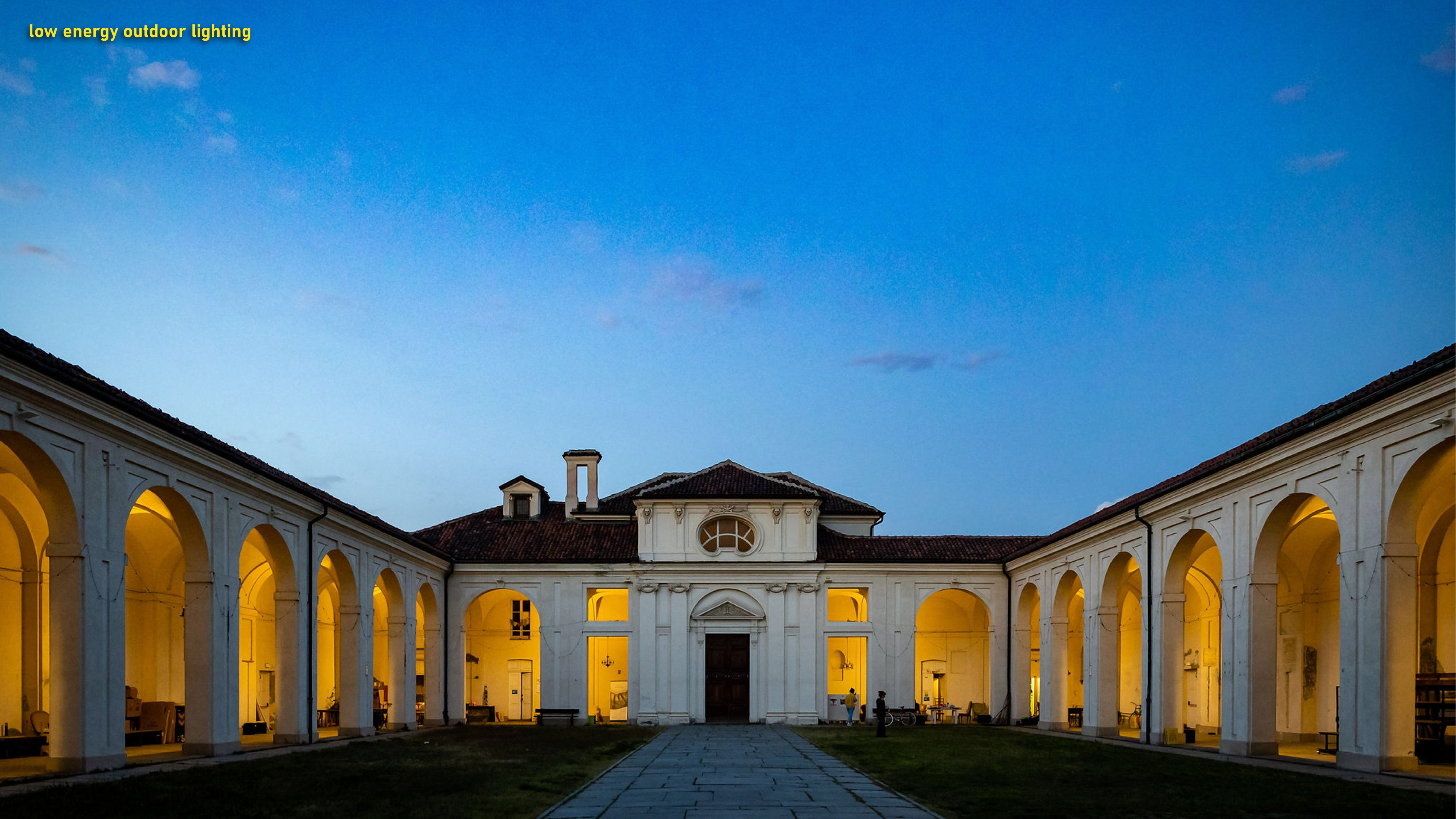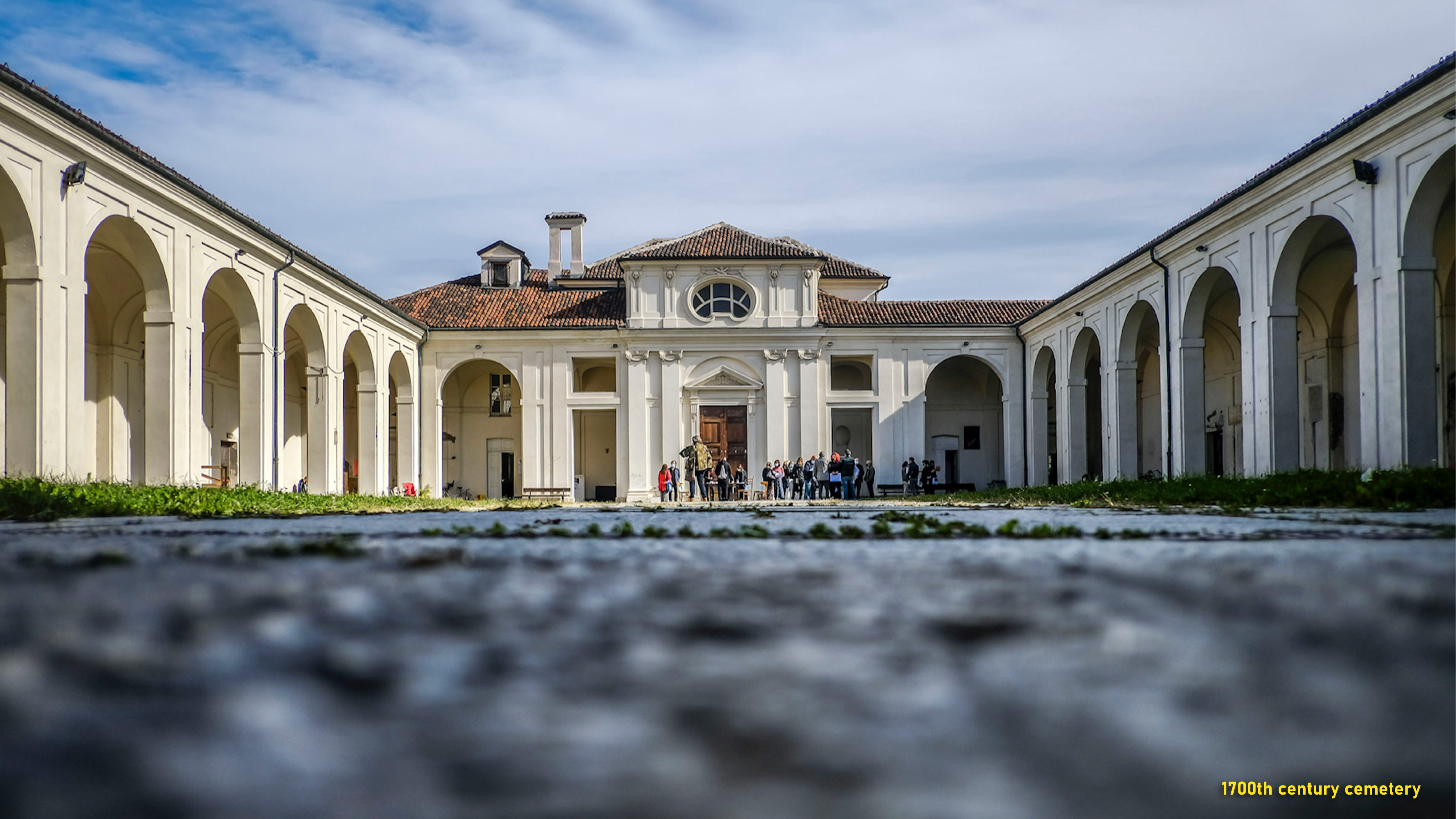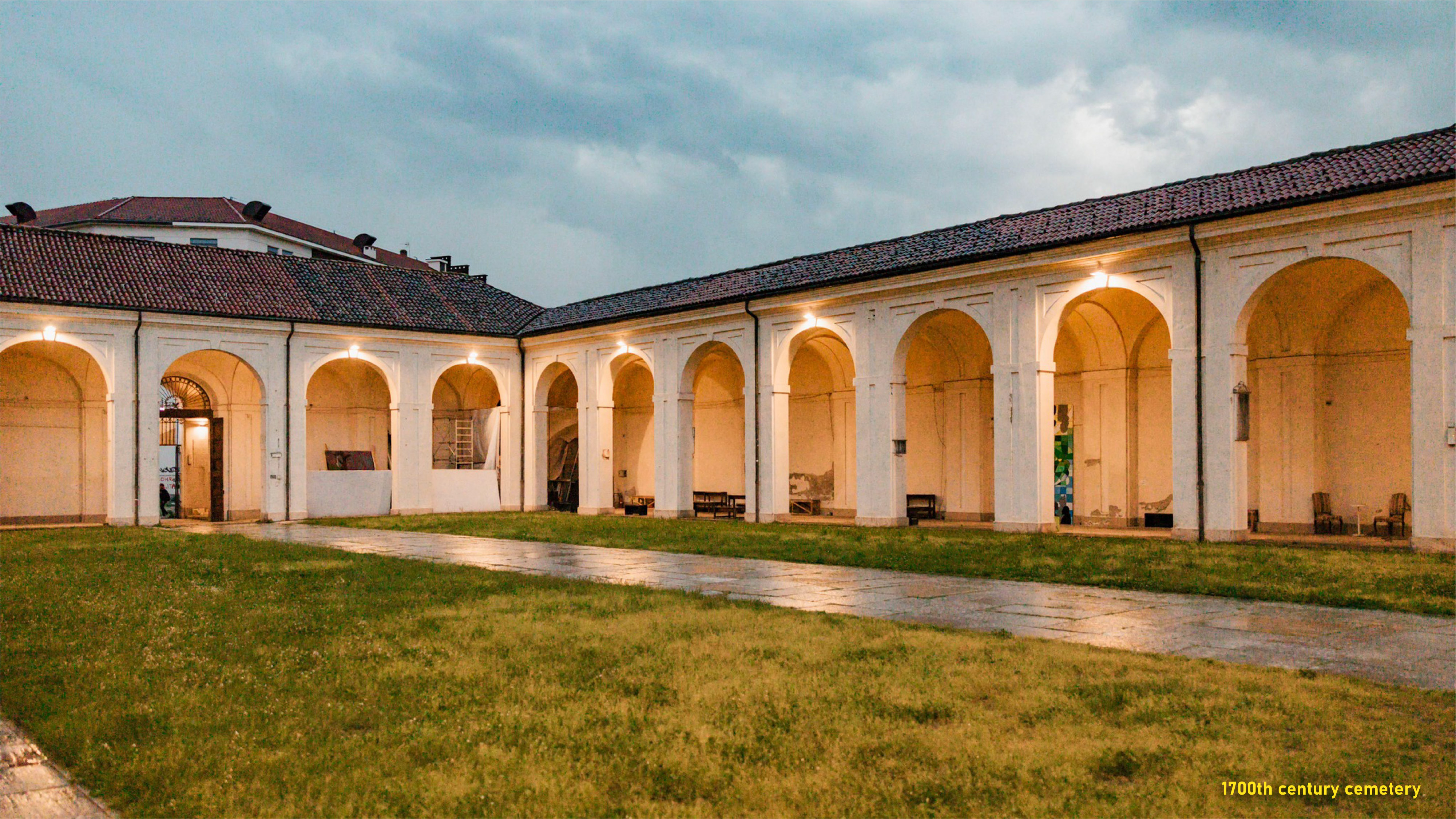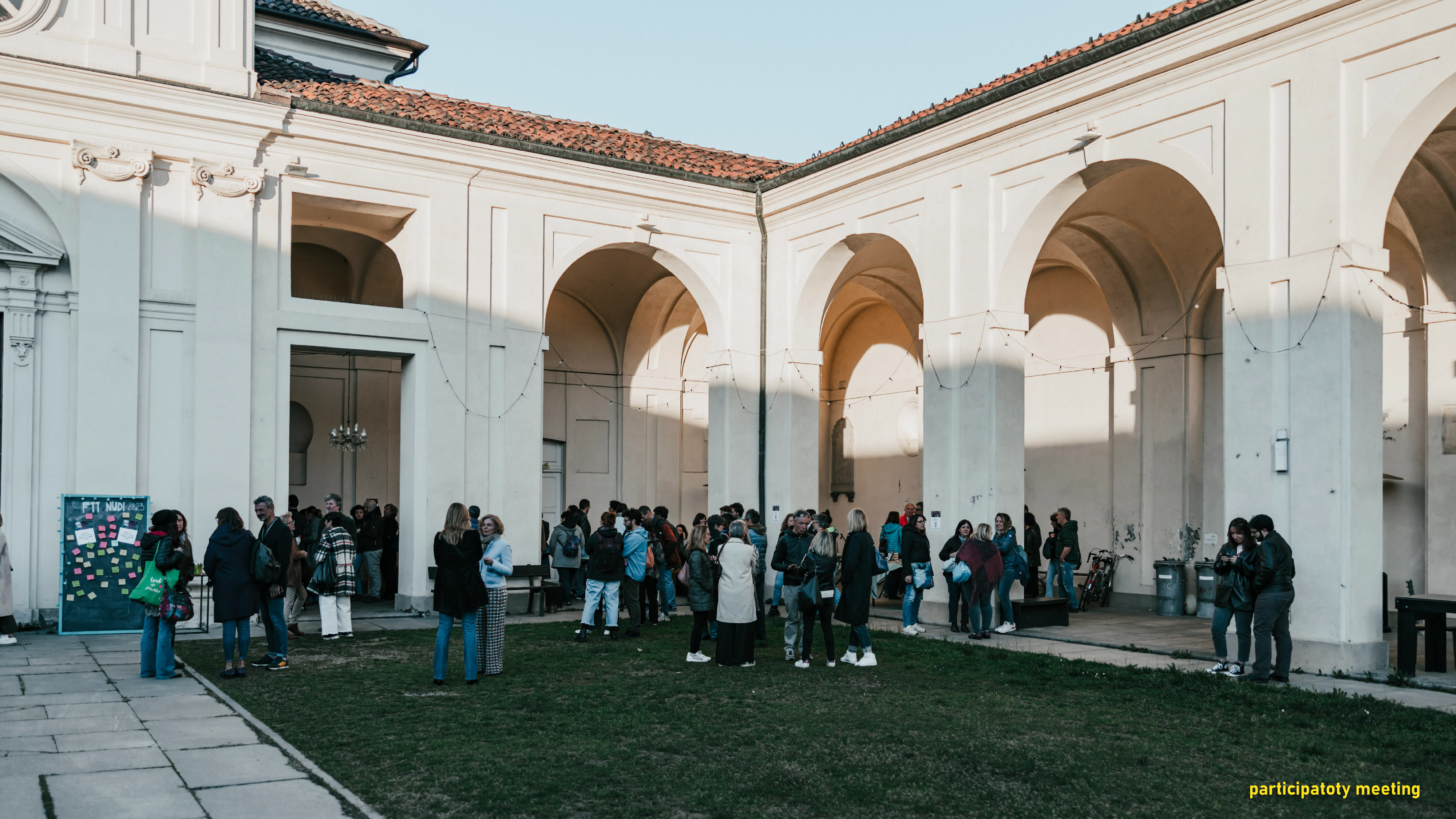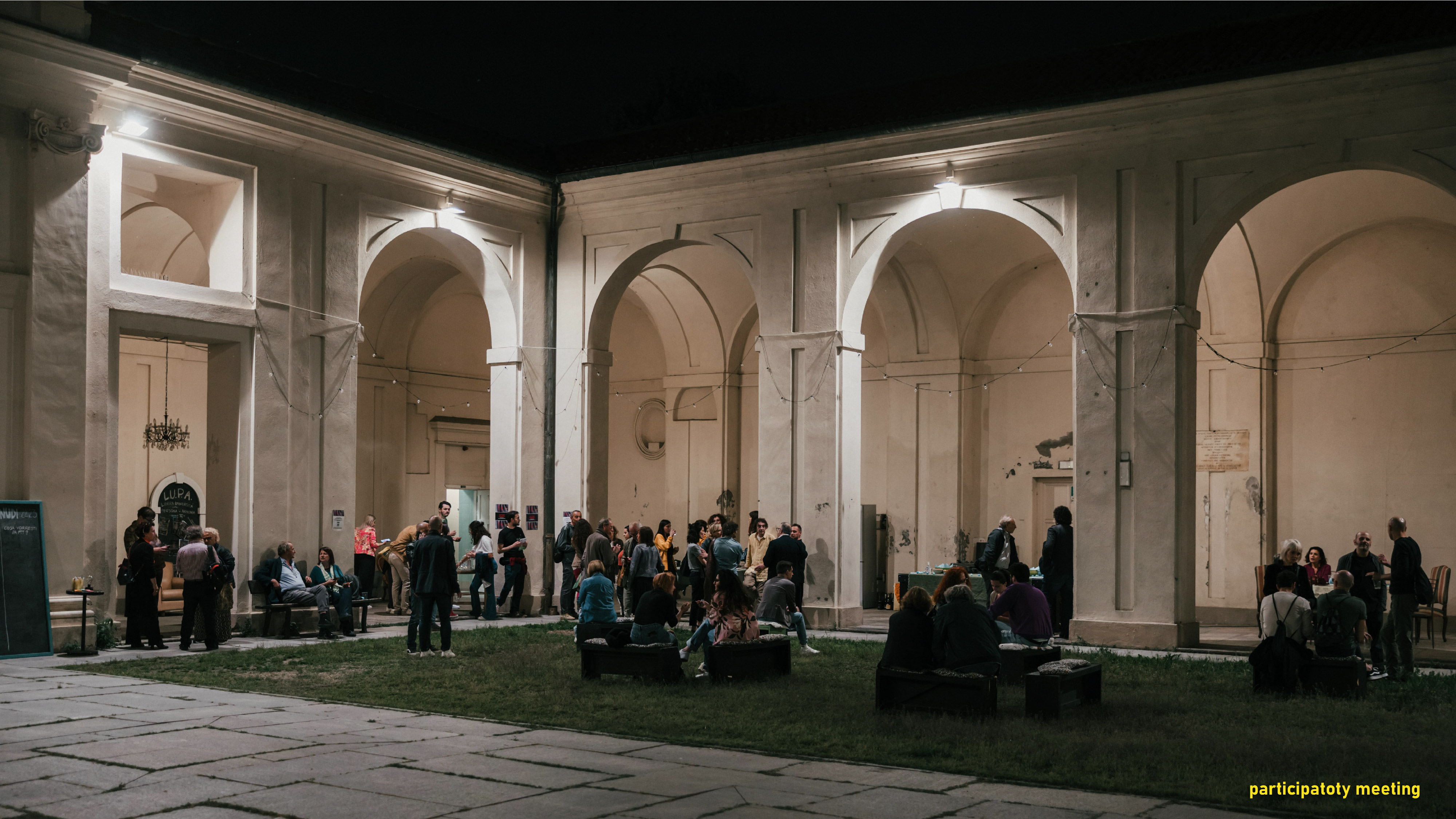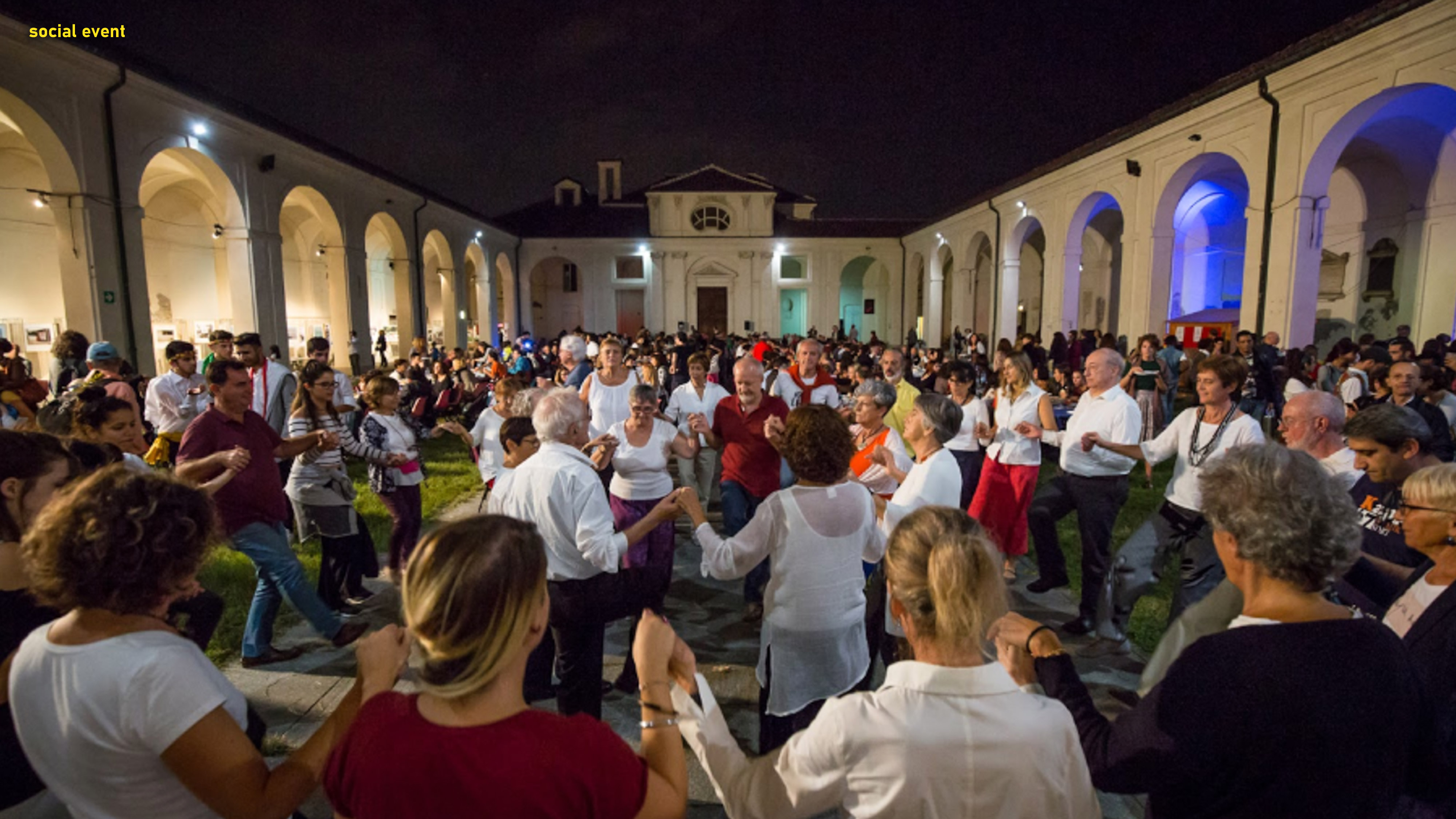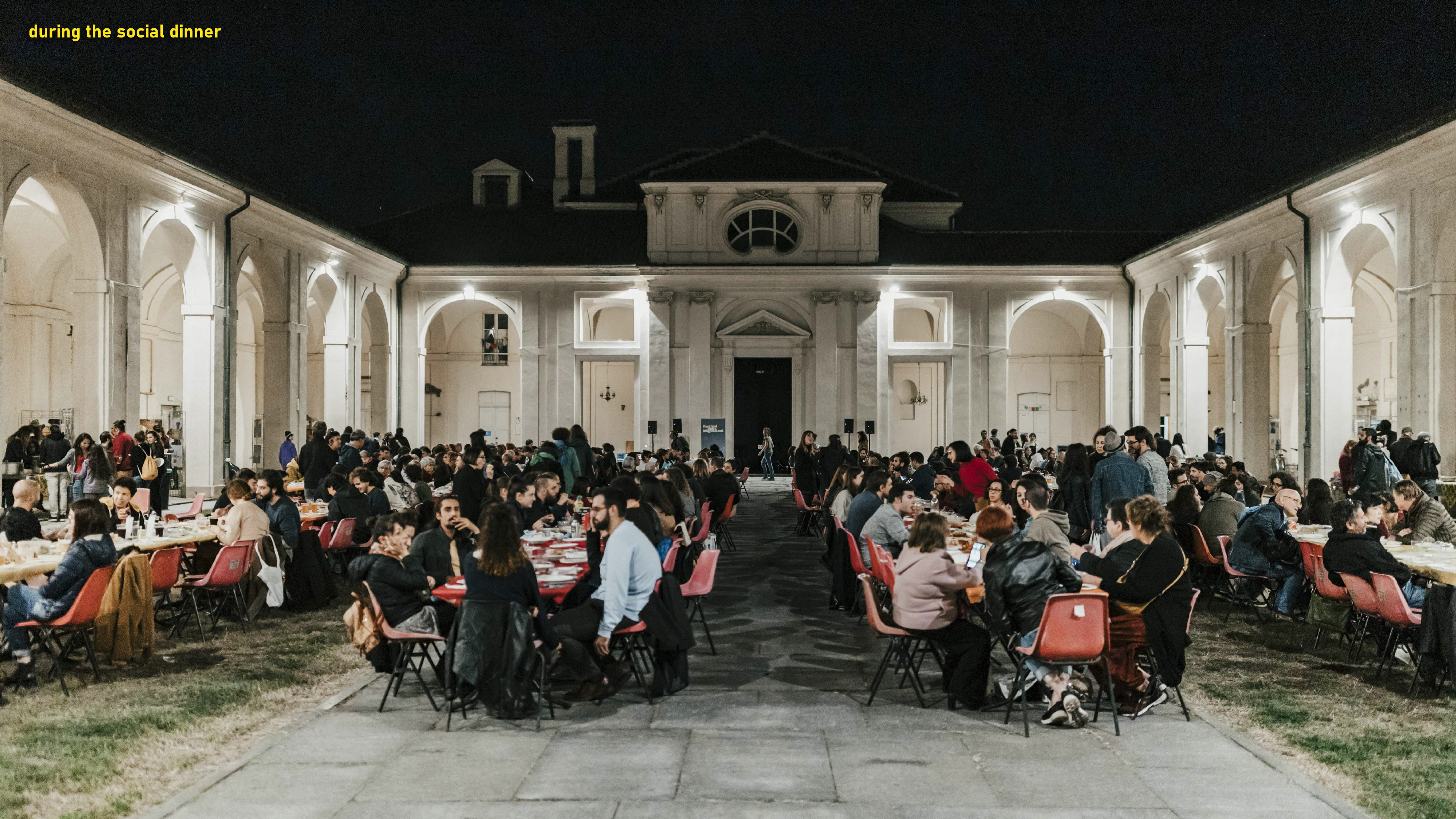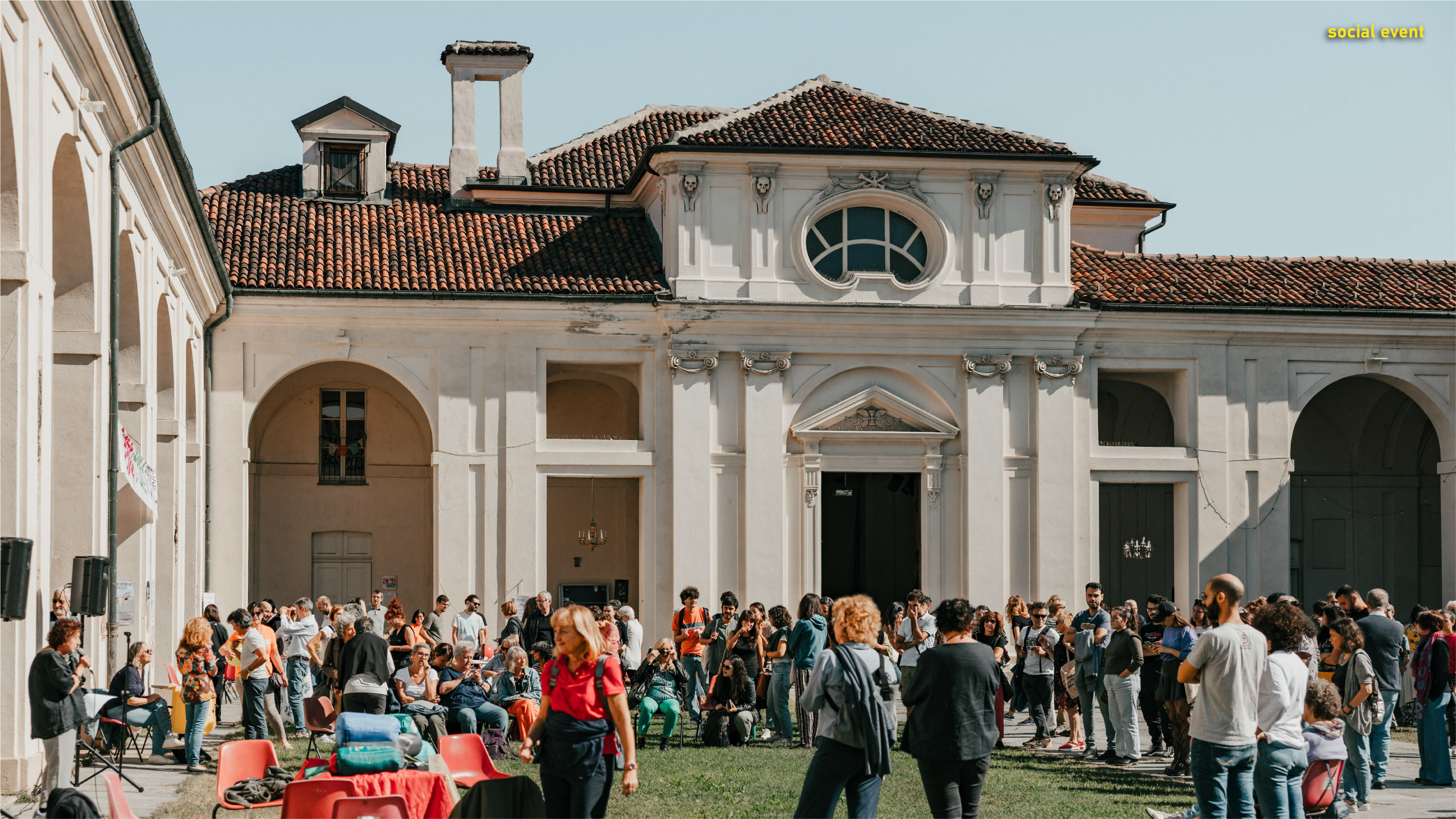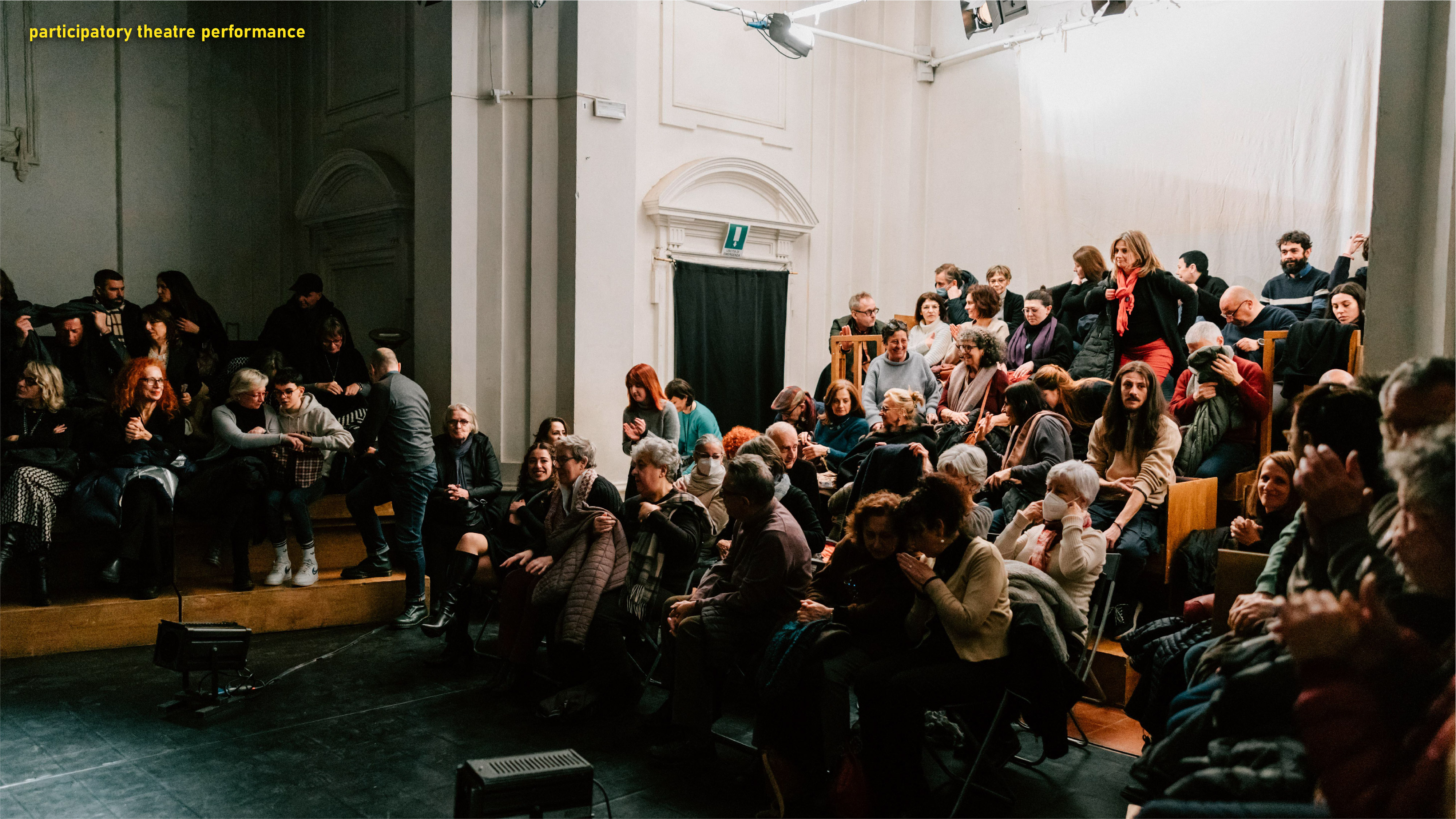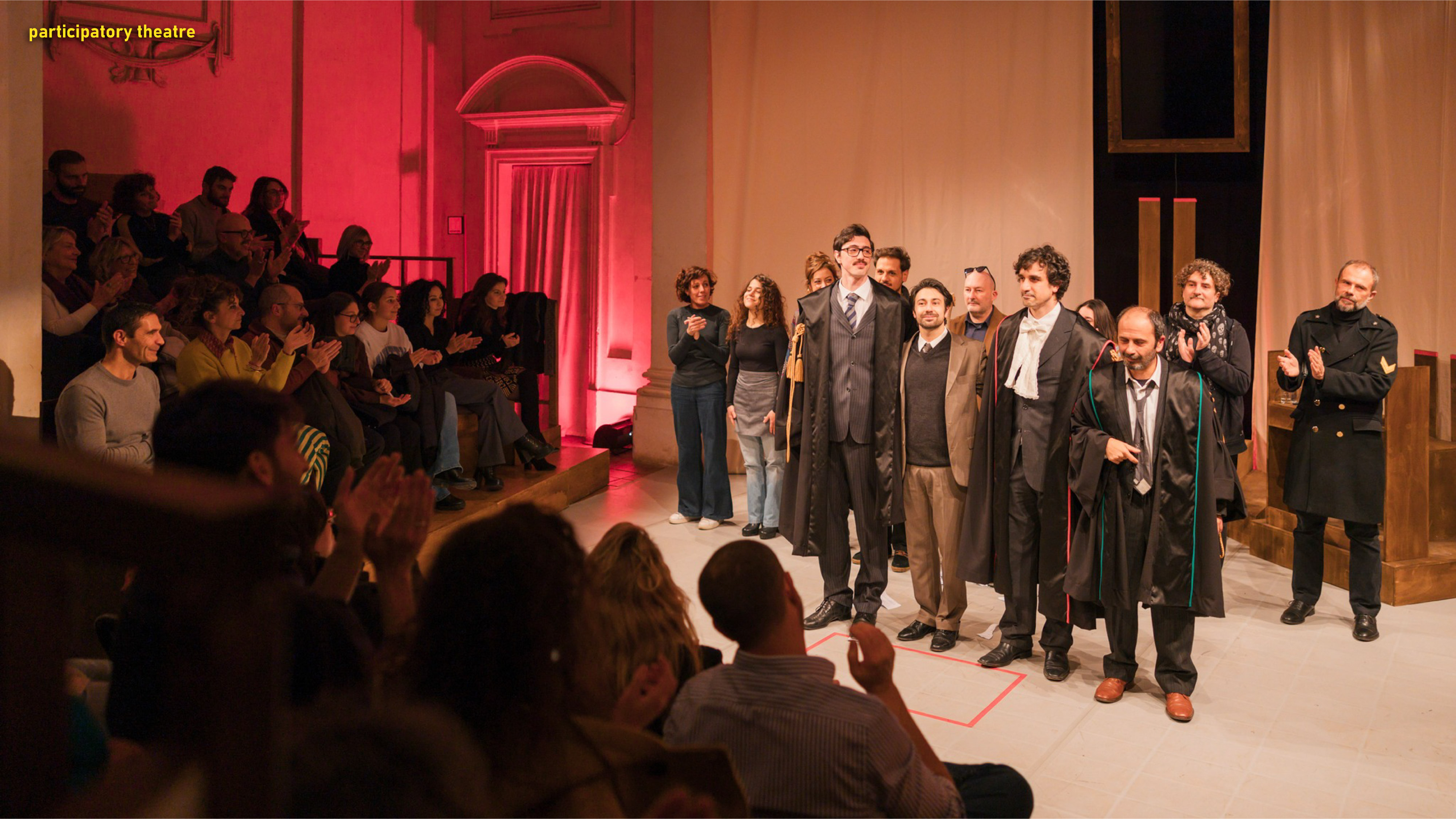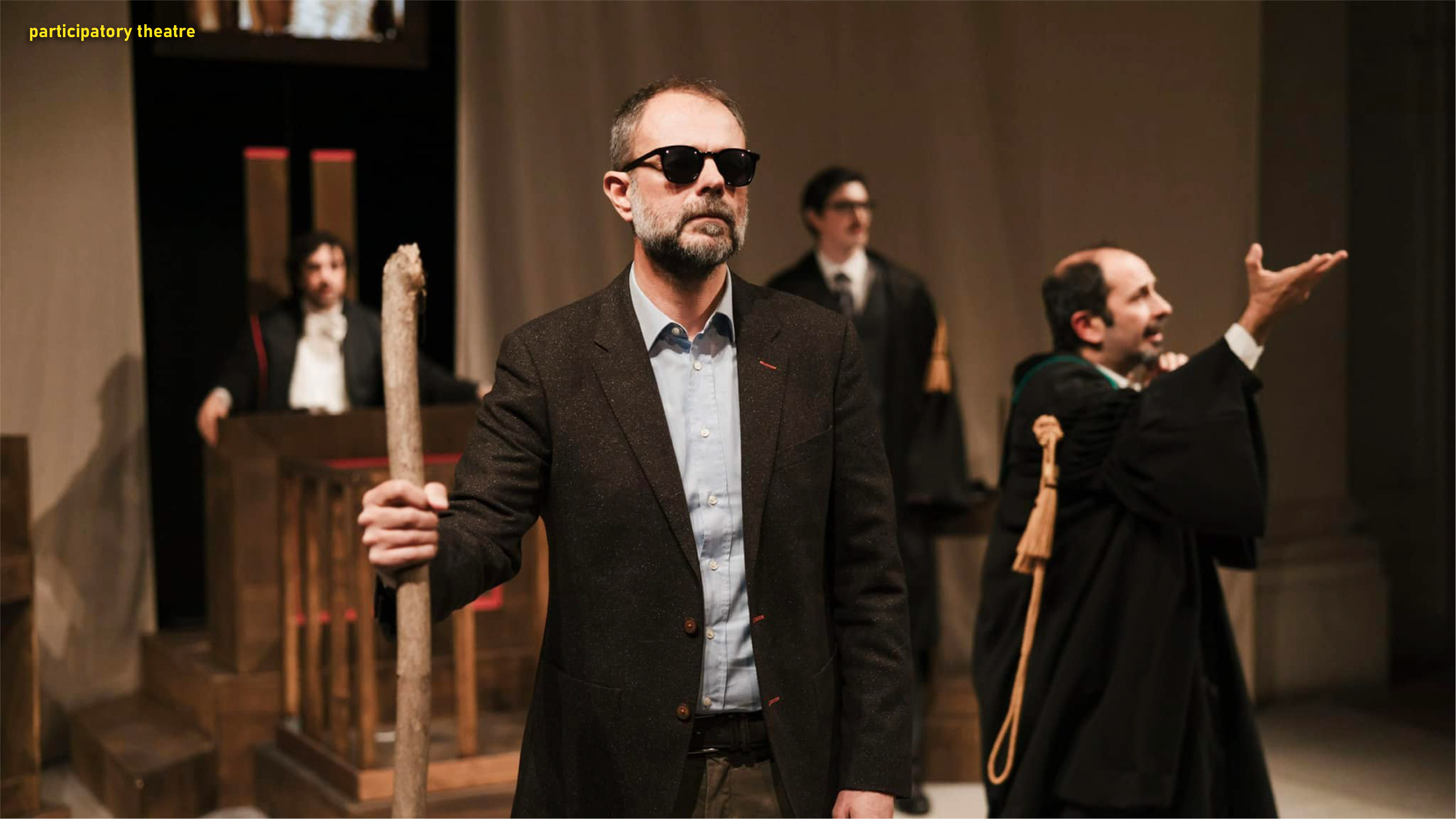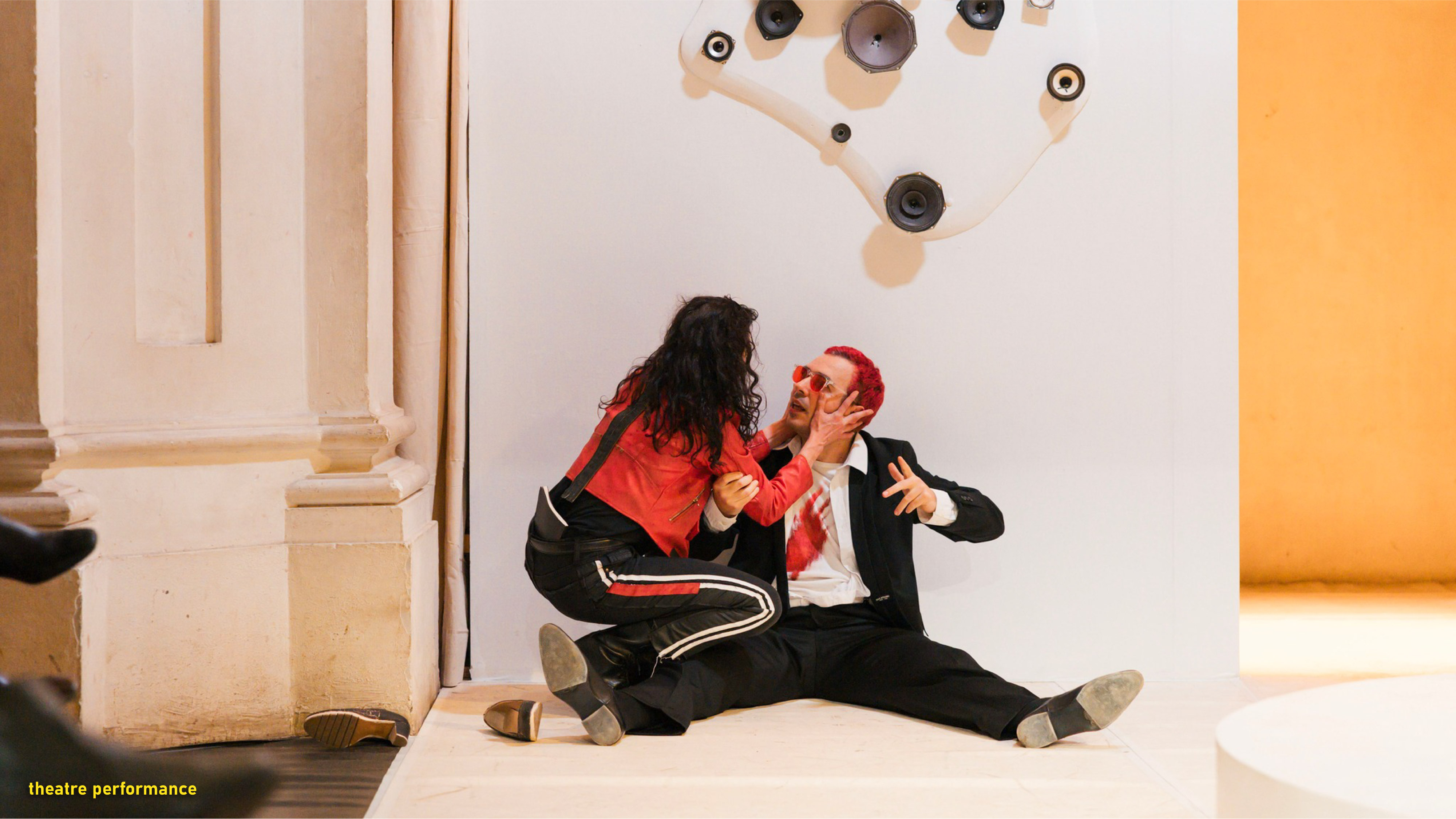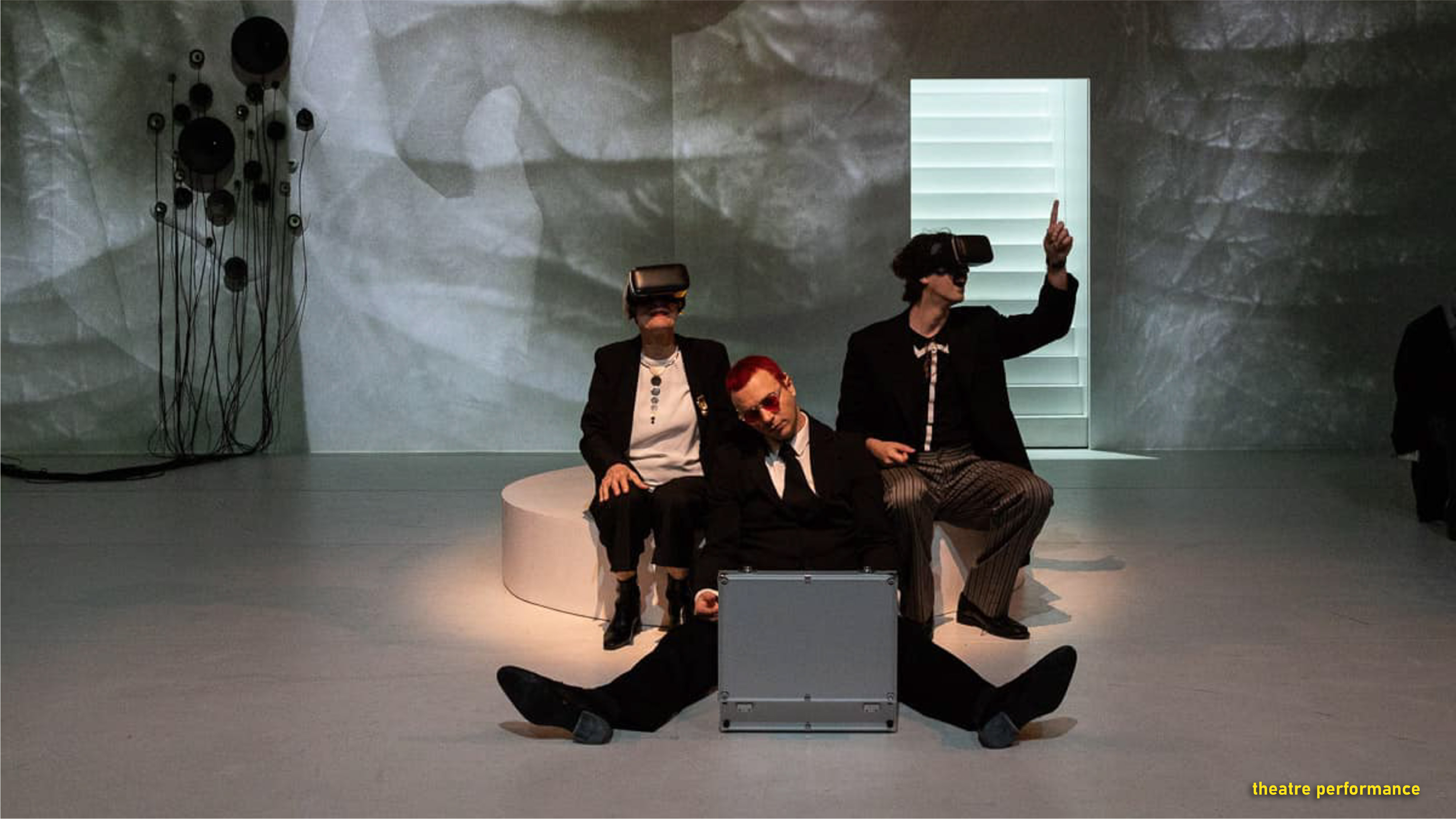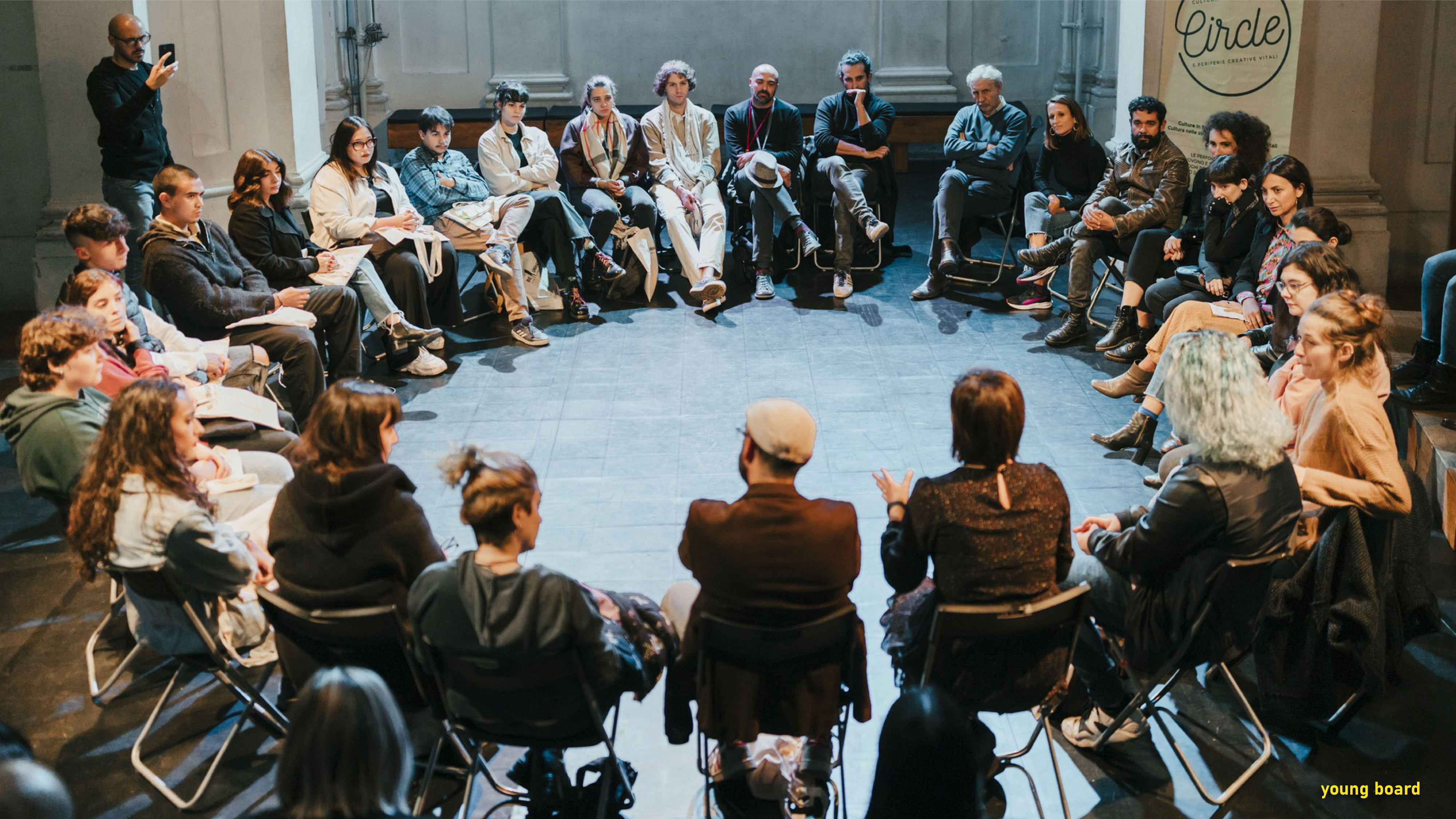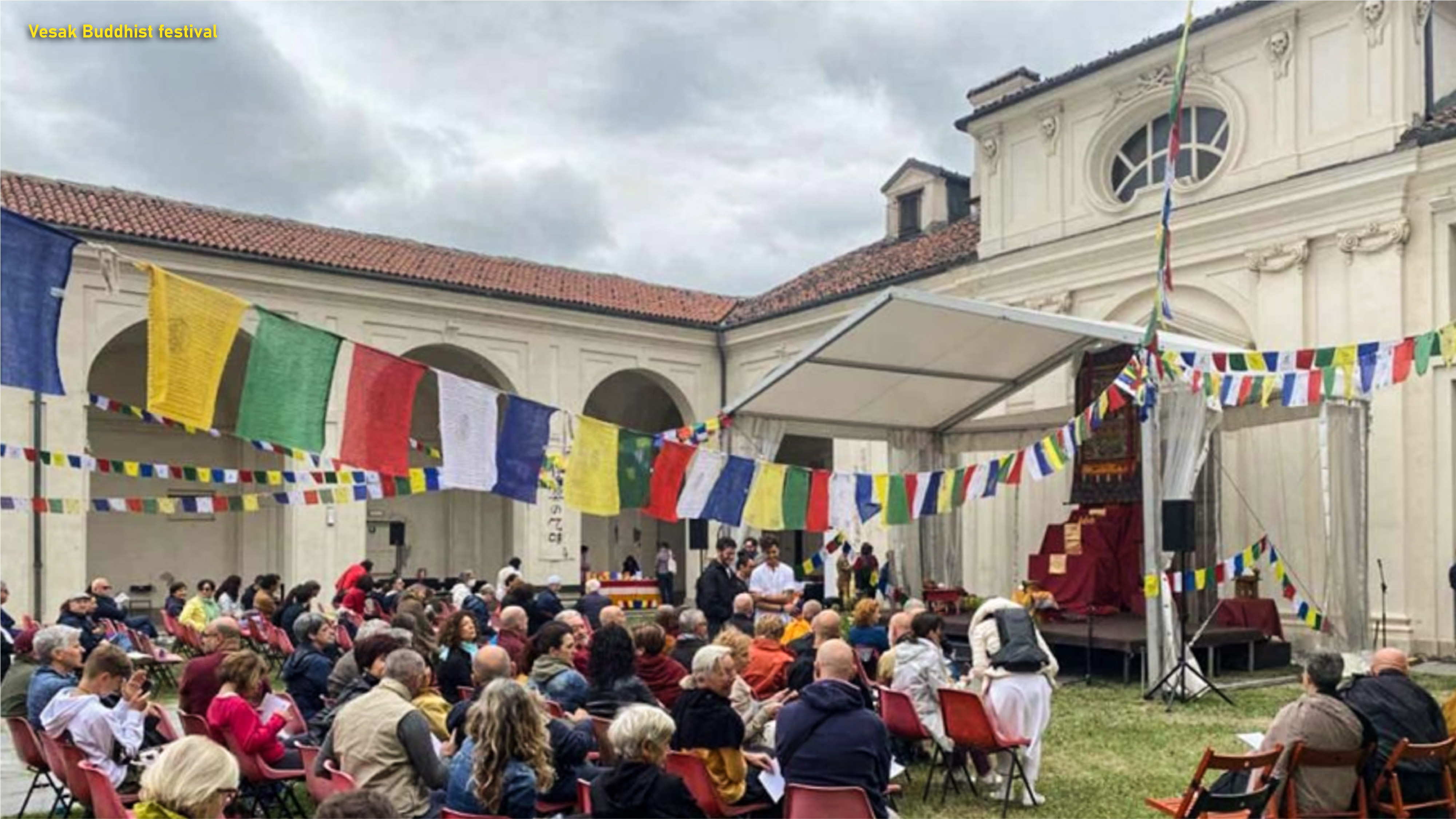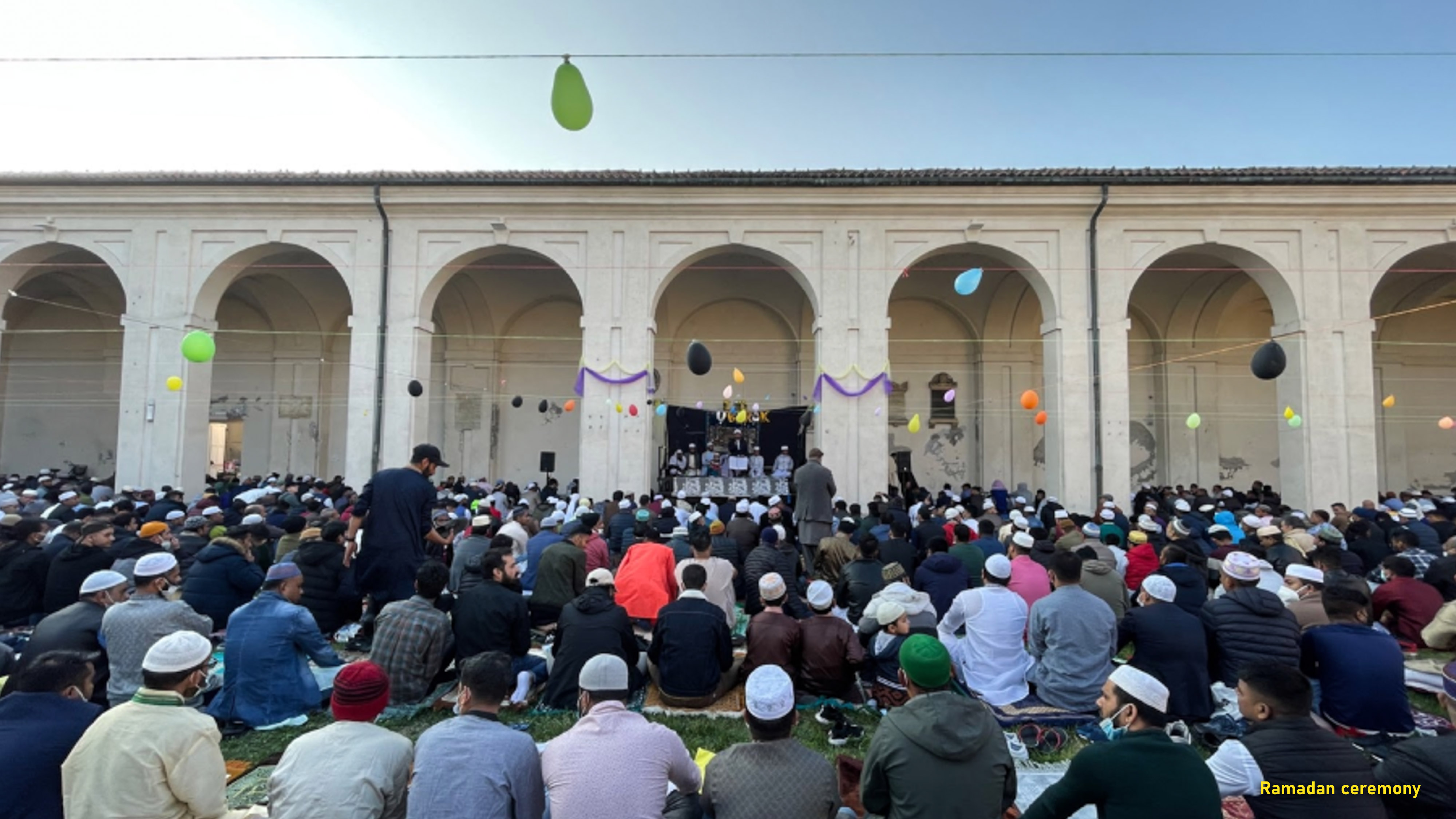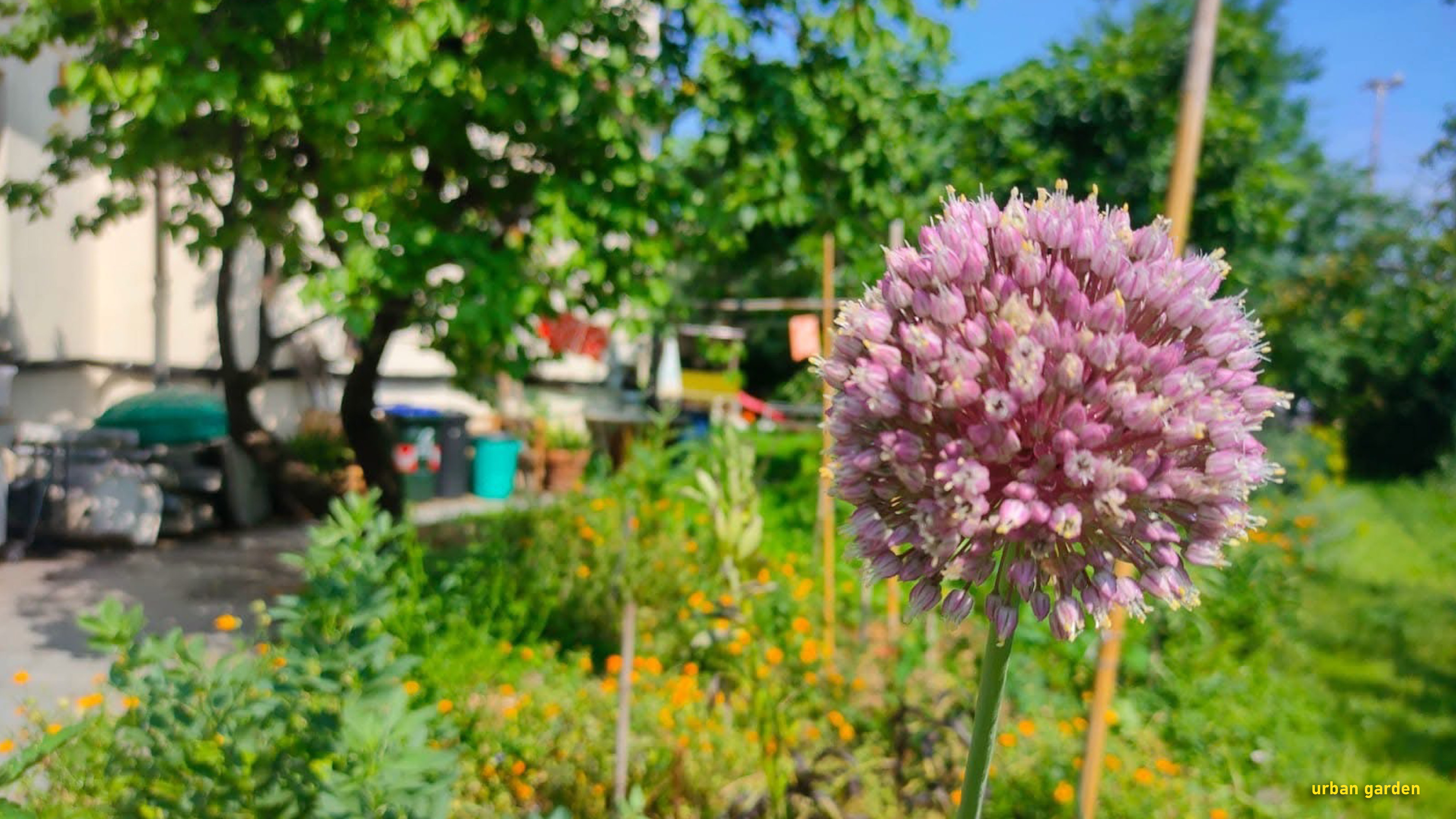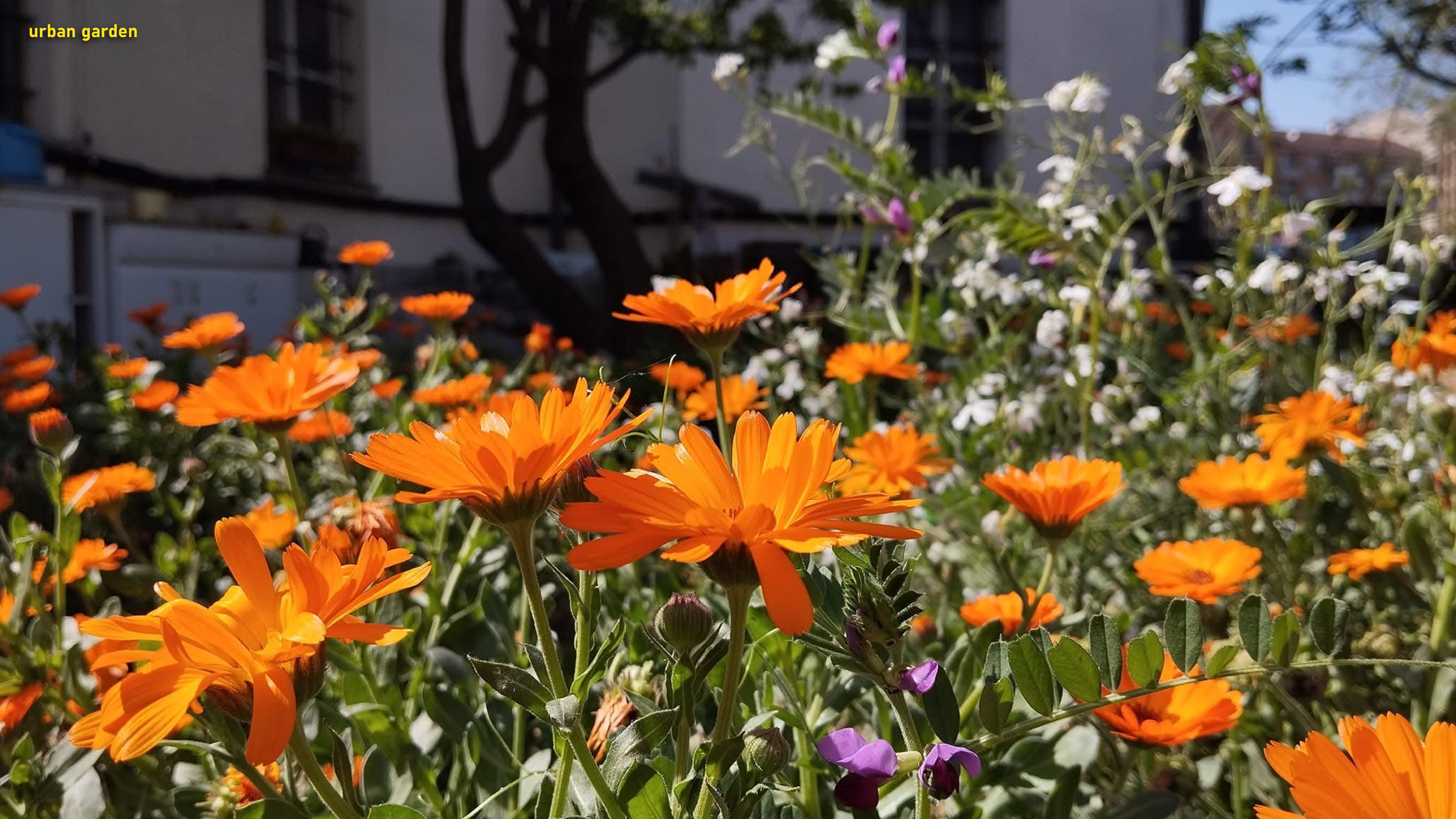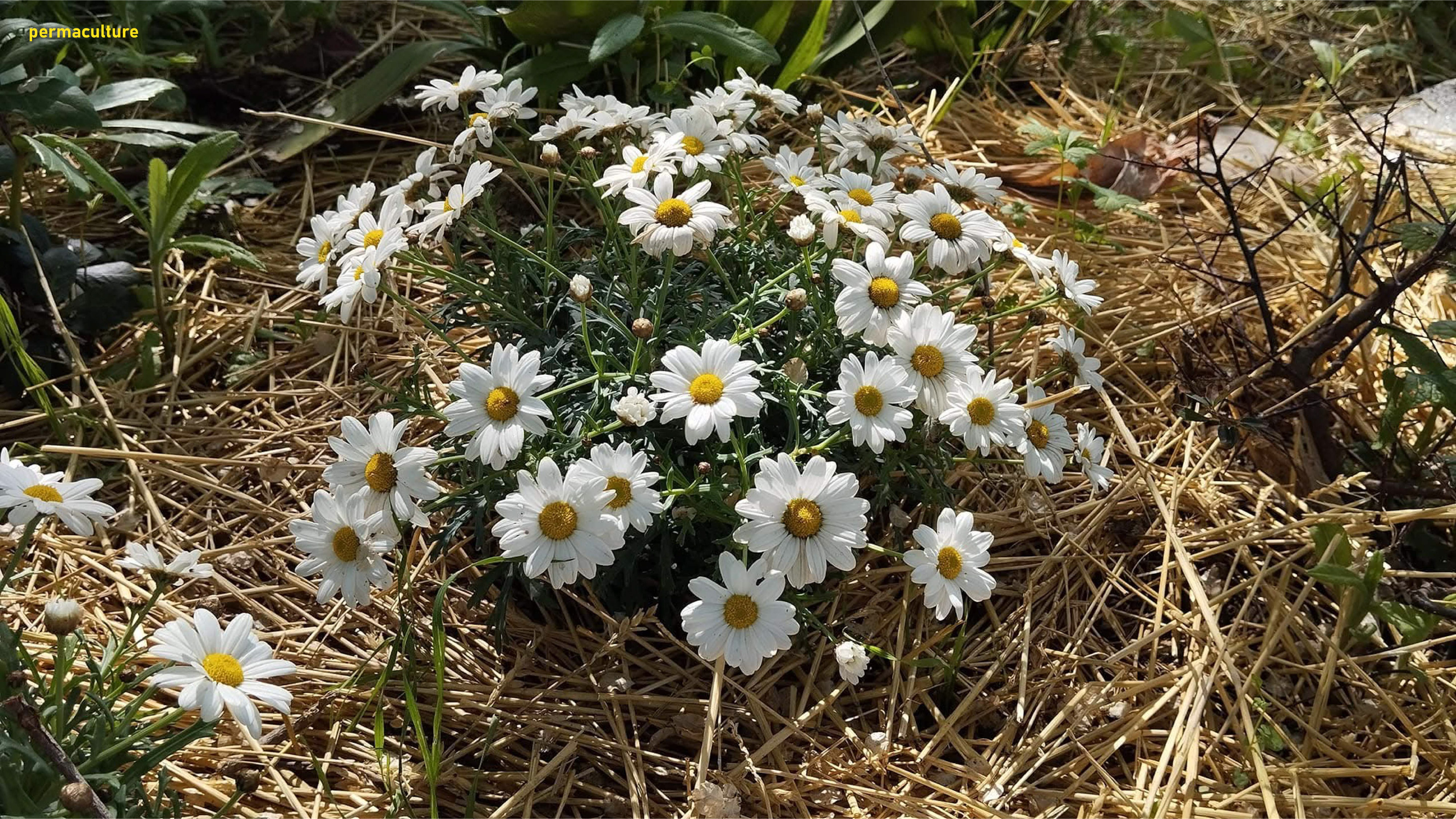Regaining a sense of belonging
San Pietro in Vincoli Cultural Hub
San Pietro in Vincoli Cultural Hub - Crossroads & Permanent Landmark
In Turin the former San Pietro in Vincoli cemetery has been transformed into a vibrant cultural hub by two theater companies and a community association.
The core of the change revolves around contemporary theater, lifelong learning, social inclusion, and culture-driven urban regeneration. What sets this place apart is its commitment to caring for people, environmental sustainability and dialogue with the neighborhood.
It is a unique cultural landmark open, accessible, a real place to be.
The core of the change revolves around contemporary theater, lifelong learning, social inclusion, and culture-driven urban regeneration. What sets this place apart is its commitment to caring for people, environmental sustainability and dialogue with the neighborhood.
It is a unique cultural landmark open, accessible, a real place to be.
Italy
Local
The project has been set up mainly in the city of Turin, but also in Avigliana, Druento and Bussoleno.
Mainly urban
It refers to other types of transformations (soft investment)
Yes
2024-12-31
No
No
No
As a representative of an organisation
The former San Pietro in Vincoli (SPV) cemetery in Turin is an historical monument, built in 1777 and now owned by the city. The municipality has entrusted the monument for 12 years to three associations—A.M.A. Factory, LabPerm, and Fuori di Palazzo—with the aim of enhancing and preserving it. The organizations manage the site with a horizontal governance approach.
The SPV – Cultural Hub project was created to transform the historic site into a permanent cultural landmark. It develops through a diverse artistic and cultural program, deeply rooted in the local territory in constant dialogue with the community, fostering accessibility, active participation and a strong sense of belonging.
Four Core Objectives
Performing Arts
-Promote contemporary theater in Turin, expanding its audience
-Diversify the cultural offering and encourage interdisciplinarity
-Support emerging artists and professionals in the sector
Lifelong Learning
-Develop critical thinking through theater and performing arts
-Integrate theater into educational paths for both young people and adults
-Create opportunities for interdisciplinary exchange and growth
Social Integration and Cohesion
-Foster well-being and social cohesion through cultural and community-based activities
-Enhance the local area through urban regeneration processes
-Make theater accessible to people facing economic, social, and physical challenges
Local Engagement:
-Strengthen proximity and dialogue with local communities
-Implement culture-driven urban regeneration initiatives
-Promote the historical value of the site to increase its attractiveness
The project engages diverse audiences, including spectators, artists, students, young people under 35, women, individuals in situations of social and economic vulnerability, foreign-origin communities, and local residents.
In 2024, the project hosted 92 cultural events, attracting over 13,000 attendees and reaching more than 39,000 people online.
The SPV – Cultural Hub project was created to transform the historic site into a permanent cultural landmark. It develops through a diverse artistic and cultural program, deeply rooted in the local territory in constant dialogue with the community, fostering accessibility, active participation and a strong sense of belonging.
Four Core Objectives
Performing Arts
-Promote contemporary theater in Turin, expanding its audience
-Diversify the cultural offering and encourage interdisciplinarity
-Support emerging artists and professionals in the sector
Lifelong Learning
-Develop critical thinking through theater and performing arts
-Integrate theater into educational paths for both young people and adults
-Create opportunities for interdisciplinary exchange and growth
Social Integration and Cohesion
-Foster well-being and social cohesion through cultural and community-based activities
-Enhance the local area through urban regeneration processes
-Make theater accessible to people facing economic, social, and physical challenges
Local Engagement:
-Strengthen proximity and dialogue with local communities
-Implement culture-driven urban regeneration initiatives
-Promote the historical value of the site to increase its attractiveness
The project engages diverse audiences, including spectators, artists, students, young people under 35, women, individuals in situations of social and economic vulnerability, foreign-origin communities, and local residents.
In 2024, the project hosted 92 cultural events, attracting over 13,000 attendees and reaching more than 39,000 people online.
PERFORMING ARTS
LONG LIFE LEARNING
INTEGRATION AND SOCIAL COHESION
TERRITORIAL ANCHORING
CULTURAL DRIVEN URBAN REGENERATION
The project stands out for its integrated approach to environmental sustainability, with a focus on reducing energy impact and promoting ecological awareness, through a combination of infrastructural interventions, best practices and educational initiatives.
Energy Efficiency and Waste Reduction
Key actions include:
-Installation of a Class A boiler
-Replacement of window frames with high thermal efficiency models compliant with CAM (Minimum Environmental Criteria) for offices and theater spaces
-Overhaul of the lighting system, with high-efficiency LED lights inside the theater and in outdoor areas.
These interventions have led to a reduction in electricity consumption.
For sustainable water resource management, flow reducers and dual-flush toilet systems have been installed. Additional measures include waste separation system in offices and during cultural events.
Environmental Best Practices
The urban garden "St’Orto Urbano", is a model of circular economy and urban re-naturalization. It has been transformed into a thriving green space following the principles of permaculture and synergistic gardening.
The area is home to fruit trees, aromatic plants, and vegetables, contributing to local biodiversity, both floral and faunal.
Environmental Collaborations and Networks
Recent collaborations include:
-GTT (Turin’s public transport company) to promote cycling mobility
-“Punto Quadro” upcycling project, in partnership with Lorusso and Cutugno Prison, to creatively repurpose discarded advertising materials
Environmental Training
Environmental training is a key element for A.M.A. Factory staff: two team members are participating in GREEN CULTURE, a capacity-building program designed to tackle ecological sustainability challenges, drive innovation, and develop a concrete ecological transition strategy.
To reduce paper waste, all promotional materials and event tickets have been fully converted to digital formats.
Energy Efficiency and Waste Reduction
Key actions include:
-Installation of a Class A boiler
-Replacement of window frames with high thermal efficiency models compliant with CAM (Minimum Environmental Criteria) for offices and theater spaces
-Overhaul of the lighting system, with high-efficiency LED lights inside the theater and in outdoor areas.
These interventions have led to a reduction in electricity consumption.
For sustainable water resource management, flow reducers and dual-flush toilet systems have been installed. Additional measures include waste separation system in offices and during cultural events.
Environmental Best Practices
The urban garden "St’Orto Urbano", is a model of circular economy and urban re-naturalization. It has been transformed into a thriving green space following the principles of permaculture and synergistic gardening.
The area is home to fruit trees, aromatic plants, and vegetables, contributing to local biodiversity, both floral and faunal.
Environmental Collaborations and Networks
Recent collaborations include:
-GTT (Turin’s public transport company) to promote cycling mobility
-“Punto Quadro” upcycling project, in partnership with Lorusso and Cutugno Prison, to creatively repurpose discarded advertising materials
Environmental Training
Environmental training is a key element for A.M.A. Factory staff: two team members are participating in GREEN CULTURE, a capacity-building program designed to tackle ecological sustainability challenges, drive innovation, and develop a concrete ecological transition strategy.
To reduce paper waste, all promotional materials and event tickets have been fully converted to digital formats.
Stepping through the gates of SPV, it’s hard to contain the “wow” effect. The beauty of the place is sublime—its neoclassical forms are harmonious, its colors pure and luminous. Crossing the threshold feels like entering a parallel dimension: the city is left behind, and the visitor is immersed in an atmosphere of peace and quiteness.
In the former SPV cemetery, located in Aurora, one of Turin’s most dynamic and challenging neighborhoods, a cultural regeneration project is coming to life. This area is marked by economic hardship, cultural tensions, and ongoing urban transformations. It has the highest percentage of young residents under 24, 43% of whom are foreigners, alongside high rates of educational dropout.
The project aims to rebuild an inclusive social fabric, transforming the historic 18th century site into an innovative cultural hub. The site’s monumentality blends with practical and inclusive solutions, creating a human-centered environment that stimulates a cultural experience.
SPV promotes cultural innovation, fostering exchange and hybridization models connecting the local community with national and international networks. The project strengthens a sense of belonging through audience engagement pathways and participatory cultural activities.
This is a unique cultural reality in Turin, acting as a permanent cultural landmark, evolving with the needs of the community. It has all the potential to become a "place to be", full of cultural encounters, creative exchanges and social interactions through a theatrical season, performing arts, training programs, and a collective urban garden.
The project also responds to the urgent need for open, trust-based spaces, a necessity that emerged strongly during the COVID-19 pandemic by rethinking the use of outdoor spaces in order to serve local community.
Therefore SPV becomes a model of social cohesion, fostering the development of social, cultural, and civic skills, becoming a cultural landmark for Turin.
In the former SPV cemetery, located in Aurora, one of Turin’s most dynamic and challenging neighborhoods, a cultural regeneration project is coming to life. This area is marked by economic hardship, cultural tensions, and ongoing urban transformations. It has the highest percentage of young residents under 24, 43% of whom are foreigners, alongside high rates of educational dropout.
The project aims to rebuild an inclusive social fabric, transforming the historic 18th century site into an innovative cultural hub. The site’s monumentality blends with practical and inclusive solutions, creating a human-centered environment that stimulates a cultural experience.
SPV promotes cultural innovation, fostering exchange and hybridization models connecting the local community with national and international networks. The project strengthens a sense of belonging through audience engagement pathways and participatory cultural activities.
This is a unique cultural reality in Turin, acting as a permanent cultural landmark, evolving with the needs of the community. It has all the potential to become a "place to be", full of cultural encounters, creative exchanges and social interactions through a theatrical season, performing arts, training programs, and a collective urban garden.
The project also responds to the urgent need for open, trust-based spaces, a necessity that emerged strongly during the COVID-19 pandemic by rethinking the use of outdoor spaces in order to serve local community.
Therefore SPV becomes a model of social cohesion, fostering the development of social, cultural, and civic skills, becoming a cultural landmark for Turin.
The project strives to create a cultural experience that is accessible, inclusive, and engaging for a wide and diverse audience, addressing inclusion across multiple dimensions.
Focus on People with Disabilities
The principles of Universal Design have been adopted to ensure full accessibility in the public spaces, including theaters and common areas, breaking down architectural barriers.
Special attention has been given to making performances accessible: with the support of the Italian Union of the Blind, the theater season includes 30-minute pre-show sensory sessions for visually impaired spectators, followed by performances with specific assistive tools. Shows like "1,2,3 Ciak" incorporate Italian Sign Language (LIS) interpretation, while others feature subtitles to make performances more inclusive.
Gender Inclusion
A.M.A. Factory boasts a leadership team composed of 80% women and promotes performances that explore themes of femininity and empowerment. Various activities are carried out in partnership with the LGBTQIA+ community, Arci Gay Torino and the Lovers Film Festival.
Harmonious Coexistence of Ethnic Minorities
SPV also serves as a space for intercultural exchange, hosting the Migration Festival, which involves Maroccan local groups and the Chinese Cultural Association. The "Pantheon of Spiritualities", led by LabPerm, organizes events and celebrations of diverse religious traditions, including the Ramadan, the Eid al-Adha (the “Fest of Sacrifice”), and the Buddhist Vesak festival.
Fighting Poverty
The project’s commitment to combating poverty is reflected in the "suspended ticket" initiative, which allows individuals in financial difficulty, including homeless people, to attend performances free of charge.
Workforce Inclusion
A.M.A. Factory has allocated a job position for a former inmate, and through a partnership with a local association, catering services have involved 50 young people on the autism spectrum, promoting social inclusion.
Focus on People with Disabilities
The principles of Universal Design have been adopted to ensure full accessibility in the public spaces, including theaters and common areas, breaking down architectural barriers.
Special attention has been given to making performances accessible: with the support of the Italian Union of the Blind, the theater season includes 30-minute pre-show sensory sessions for visually impaired spectators, followed by performances with specific assistive tools. Shows like "1,2,3 Ciak" incorporate Italian Sign Language (LIS) interpretation, while others feature subtitles to make performances more inclusive.
Gender Inclusion
A.M.A. Factory boasts a leadership team composed of 80% women and promotes performances that explore themes of femininity and empowerment. Various activities are carried out in partnership with the LGBTQIA+ community, Arci Gay Torino and the Lovers Film Festival.
Harmonious Coexistence of Ethnic Minorities
SPV also serves as a space for intercultural exchange, hosting the Migration Festival, which involves Maroccan local groups and the Chinese Cultural Association. The "Pantheon of Spiritualities", led by LabPerm, organizes events and celebrations of diverse religious traditions, including the Ramadan, the Eid al-Adha (the “Fest of Sacrifice”), and the Buddhist Vesak festival.
Fighting Poverty
The project’s commitment to combating poverty is reflected in the "suspended ticket" initiative, which allows individuals in financial difficulty, including homeless people, to attend performances free of charge.
Workforce Inclusion
A.M.A. Factory has allocated a job position for a former inmate, and through a partnership with a local association, catering services have involved 50 young people on the autism spectrum, promoting social inclusion.
San Pietro in Vincoli stands out as a cultural and creative hub that has always promoted citizen inclusion at various levels:
Performing Arts
The "I Visionari" format, linked to the national initiative "L’Italia dei Visionari", involves 30 citizens in selecting performances to be included in the season’s program. Productions like "Spettatore Condannato a Morte" by Beppe Rosso offer participatory experiences, engaging 40 non-professional actors alongside professionals. "Come gli Uccelli" by Marco Lorenzi, winner of the UBU Theater Award 2024, involved a public workshop leading to a video installation. The "Young Board" initiative empowers young people under 30 as cultural event organizers.
Education and Training
Fahrenheit is a program, in collaboration with local Library, that involve 15 participants to create a public performance for over 200 spectators.
LabPerm’s L.U.P.A. offers inclusive theater training in movement, voice, and acting.
San Pietro in Vincoli also organized a European artistic residency, funded by the Italian Ministry of Culture, fostering the creative exchange between Italian artists and the Deutsches Theater in Berlin.
Cultural and Socially Events
The Migration Festival attracts 5,000 attendees, with 50 volunteers and local associations. SPV also hosts multicultural celebrations, including the Buddhist Vesak Festival and Moroccan Fest, each drawing 2,000 participants.
Urban Agriculture
The St’Orto Urbano, managed by Fuori di Palazzo, involves 90 families and residents in community gardening and circular economy projects.
San Pietro in Vincoli continues to be a dynamic space for cultural exchange, participation, and social innovation.
Performing Arts
The "I Visionari" format, linked to the national initiative "L’Italia dei Visionari", involves 30 citizens in selecting performances to be included in the season’s program. Productions like "Spettatore Condannato a Morte" by Beppe Rosso offer participatory experiences, engaging 40 non-professional actors alongside professionals. "Come gli Uccelli" by Marco Lorenzi, winner of the UBU Theater Award 2024, involved a public workshop leading to a video installation. The "Young Board" initiative empowers young people under 30 as cultural event organizers.
Education and Training
Fahrenheit is a program, in collaboration with local Library, that involve 15 participants to create a public performance for over 200 spectators.
LabPerm’s L.U.P.A. offers inclusive theater training in movement, voice, and acting.
San Pietro in Vincoli also organized a European artistic residency, funded by the Italian Ministry of Culture, fostering the creative exchange between Italian artists and the Deutsches Theater in Berlin.
Cultural and Socially Events
The Migration Festival attracts 5,000 attendees, with 50 volunteers and local associations. SPV also hosts multicultural celebrations, including the Buddhist Vesak Festival and Moroccan Fest, each drawing 2,000 participants.
Urban Agriculture
The St’Orto Urbano, managed by Fuori di Palazzo, involves 90 families and residents in community gardening and circular economy projects.
San Pietro in Vincoli continues to be a dynamic space for cultural exchange, participation, and social innovation.
The project has engaged over 100 stakeholders at various levels.
Local Level
Collaboration with District 7 of the City of Turin has been crucial. Formal partnerships have been established with many Departments of the city: Culture (Ass. Purchia), Youth Policies and Urban Regeneration (Ass. Salerno), and Social Policies (Ass. Rosatelli), receiving constant support and endorsement letters.
A key synergy exists with academic institutions: the University of Turin and the Polytechnic of Turin, which contribute to numerous initiatives. Partnerships with educational institutions like Scuola Holden have enriched the theater season’s cultural programming and strengthened connections with the local creative scene. The involvement of the Interfaith Committee, an advisory body of the Municipality of Turin, has helped address issues related to cultural and religious integration, reinforcing the project's inclusive values.
Regional Level
AMA Factory is recognized as cultural Entity by the Piedmont Region.
National Level
Furthermore AMA Factory is acknowledged by the FUS (Single Fund for Performing Arts) of the Cultural Ministry
European Level
Internationally, the project collaborates with the University of Malta and a network of theater companies across Poland, Spain, Germany, and France, fostering cultural exchange and a multidisciplinary approach. The performance "Spettatore Condannato a Morte" is supported by the Consulate General of Romania in Turin and the Romanian Institute of Culture and Humanistic Research in Venice, engaging the Romanian community of Turin. Additionally, AMA Factory is a partner in the Performing Natural Intelligence project with the Deutsches Theater in Berlin, funded by the Italian Ministry of Culture through the Boarding Pass grant.
The engagement of these stakeholders has significantly enhanced the project’s territorial impact, ensuring strong local roots. Moreover, partnerships with high-level institutions have guaranteed high quality.
Local Level
Collaboration with District 7 of the City of Turin has been crucial. Formal partnerships have been established with many Departments of the city: Culture (Ass. Purchia), Youth Policies and Urban Regeneration (Ass. Salerno), and Social Policies (Ass. Rosatelli), receiving constant support and endorsement letters.
A key synergy exists with academic institutions: the University of Turin and the Polytechnic of Turin, which contribute to numerous initiatives. Partnerships with educational institutions like Scuola Holden have enriched the theater season’s cultural programming and strengthened connections with the local creative scene. The involvement of the Interfaith Committee, an advisory body of the Municipality of Turin, has helped address issues related to cultural and religious integration, reinforcing the project's inclusive values.
Regional Level
AMA Factory is recognized as cultural Entity by the Piedmont Region.
National Level
Furthermore AMA Factory is acknowledged by the FUS (Single Fund for Performing Arts) of the Cultural Ministry
European Level
Internationally, the project collaborates with the University of Malta and a network of theater companies across Poland, Spain, Germany, and France, fostering cultural exchange and a multidisciplinary approach. The performance "Spettatore Condannato a Morte" is supported by the Consulate General of Romania in Turin and the Romanian Institute of Culture and Humanistic Research in Venice, engaging the Romanian community of Turin. Additionally, AMA Factory is a partner in the Performing Natural Intelligence project with the Deutsches Theater in Berlin, funded by the Italian Ministry of Culture through the Boarding Pass grant.
The engagement of these stakeholders has significantly enhanced the project’s territorial impact, ensuring strong local roots. Moreover, partnerships with high-level institutions have guaranteed high quality.
The project involved a wide range of disciplines and fields of knowledge, reflecting a multidisciplinary and integrated approach in both design and implementation. A.M.A. Factory focuses on theatrical production, cultural programming, and organizing high-quality cultural events. LabPerm engages in research, theatrical production, and training, applying theater techniques to various aspects of life; it also coordinates cultural integration and religious actions. Fuori di Palazzo manages green areas and implements outdoor gardening initiatives. This synergy enables the site to respond to the complex needs of the neighborhood and promote cultural and social innovation.
Among the disciplines involved, the performing arts play a central role, with the participation of actors, directors, artistic directors, musicians, light & sound designers, and technicians. Integration with architecture and urban planning made it possible to redevelop the space, enhancing the historical and cultural context of the former cemetery, with the support of a professional team of architects specialized in the regeneration of cultural sites. The social and educational component is managed by educators, social workers, psychotherapists, and drama therapists, in collaboration with the ASL (local health authority), to address sensitive issues such as youth distress. The facilitation and management of collaborative processes have enabled the activation of participatory pathways with local communities, strengthening the identity and inclusiveness of the site. The contribution of natural sciences is also significant, involving agronomists and biologists in the creation of the urban garden, promoting environmental sustainability and intergenerational socialization.
The interaction between these disciplines in the various projects developed in SPV is coordinated by a highly qualified management team composed by project manager, fundraiser, cultural planner, graphic designer and social media manager.
Among the disciplines involved, the performing arts play a central role, with the participation of actors, directors, artistic directors, musicians, light & sound designers, and technicians. Integration with architecture and urban planning made it possible to redevelop the space, enhancing the historical and cultural context of the former cemetery, with the support of a professional team of architects specialized in the regeneration of cultural sites. The social and educational component is managed by educators, social workers, psychotherapists, and drama therapists, in collaboration with the ASL (local health authority), to address sensitive issues such as youth distress. The facilitation and management of collaborative processes have enabled the activation of participatory pathways with local communities, strengthening the identity and inclusiveness of the site. The contribution of natural sciences is also significant, involving agronomists and biologists in the creation of the urban garden, promoting environmental sustainability and intergenerational socialization.
The interaction between these disciplines in the various projects developed in SPV is coordinated by a highly qualified management team composed by project manager, fundraiser, cultural planner, graphic designer and social media manager.
The innovation of the project lies in the transformation of a former cemetery, a historic 18th-century monument, from a place of death to a place of life. The project does not simply redevelop a degraded and abandoned urban space, but transforms it into a permanent cultural hub, aimed not only at improving urban aesthetics, but also at strengthening the social fabric and collective identity of the neighborhood, creating new geographies and promoting a sense of belonging.
SPV is a hybrid cultural spaces and culturally regenerated place, a new places of culture that use the civic capital to support people in vulnerable conditions, where everyone can feel safe, find stimuli, and experience moments of shared sociality. The project is also inspired by the Cultural Welfare that recognise the importance of culture for the promotion of the individual wellbeing. From an artistic point of view, the project is a reference for contemporary theater and innovative languages, with high-level productions such as “Come gli uccelli," winner of the UBU award for theater 2024.
For the realization of the performances, advanced technologies are used, such as Virtual Reality viewers in the crypts and wireless headphones for immersive experiences, demonstrating a pioneering approach in cultural fruition.
Social innovation is also manifested through initiatives such as the "suspended ticket," which promotes cultural access to the most vulnerable groups, and collaborations with a local project of temporary social housing at affordable prices. Another collaboration includes a local NGO which works with children, young people, and families in difficult situations and poverty.
Finally, technological innovation includes ticketing and promotion strategy all in digital, making SPV a model of sustainable and cutting-edge cultural infrastructure.
SPV is a hybrid cultural spaces and culturally regenerated place, a new places of culture that use the civic capital to support people in vulnerable conditions, where everyone can feel safe, find stimuli, and experience moments of shared sociality. The project is also inspired by the Cultural Welfare that recognise the importance of culture for the promotion of the individual wellbeing. From an artistic point of view, the project is a reference for contemporary theater and innovative languages, with high-level productions such as “Come gli uccelli," winner of the UBU award for theater 2024.
For the realization of the performances, advanced technologies are used, such as Virtual Reality viewers in the crypts and wireless headphones for immersive experiences, demonstrating a pioneering approach in cultural fruition.
Social innovation is also manifested through initiatives such as the "suspended ticket," which promotes cultural access to the most vulnerable groups, and collaborations with a local project of temporary social housing at affordable prices. Another collaboration includes a local NGO which works with children, young people, and families in difficult situations and poverty.
Finally, technological innovation includes ticketing and promotion strategy all in digital, making SPV a model of sustainable and cutting-edge cultural infrastructure.
The SPV - Cultural Hub project is based on an integrated approach that combines artistic production, training, and cultural innovation, leveraging the multi-year experience of the companies involved. The approach consists of several phases:
Historical and Architectural Analysis
In-depth research on the origins and transformations of the former cemetery has allowed us to understand the peculiarities of the site, guiding interventions that respect its historical identity.
Conservative Restoration
Restoration works have been carried out to preserve the original architectural elements, such as the wall structures and decorations, while ensuring the functional adaptation of the spaces to the new cultural needs.
Involvement of Local Artistic Entities
By collaborating with local theater companies and cultural associations, the project has promoted a shared program, transforming San Pietro in Vincoli into a dynamic and participatory cultural center.
Diversification of Activities
The cultural offer has been expanded to include theatrical performances, concerts, exhibitions, and educational workshops, with the aim of attracting a heterogeneous audience and promoting social inclusion.
Economic Sustainability
A management model has been implemented that combines public funding, private sponsorships, and own resources, ensuring the continuity and autonomy of the project over time.
Methodology and Organization
The methodology involves work focused on the enhancement of intangible and tangible historical heritage and the active involvement of the local community. It also includes a flexible work organization with on-site sessions and remote sessions. Strategic coordination meetings are held each 4 months between the directors of the three associations.
Historical and Architectural Analysis
In-depth research on the origins and transformations of the former cemetery has allowed us to understand the peculiarities of the site, guiding interventions that respect its historical identity.
Conservative Restoration
Restoration works have been carried out to preserve the original architectural elements, such as the wall structures and decorations, while ensuring the functional adaptation of the spaces to the new cultural needs.
Involvement of Local Artistic Entities
By collaborating with local theater companies and cultural associations, the project has promoted a shared program, transforming San Pietro in Vincoli into a dynamic and participatory cultural center.
Diversification of Activities
The cultural offer has been expanded to include theatrical performances, concerts, exhibitions, and educational workshops, with the aim of attracting a heterogeneous audience and promoting social inclusion.
Economic Sustainability
A management model has been implemented that combines public funding, private sponsorships, and own resources, ensuring the continuity and autonomy of the project over time.
Methodology and Organization
The methodology involves work focused on the enhancement of intangible and tangible historical heritage and the active involvement of the local community. It also includes a flexible work organization with on-site sessions and remote sessions. Strategic coordination meetings are held each 4 months between the directors of the three associations.
The regeneration project of SPV is an example of how it’s possible to transform a disused historic site into a lively cultural center, offering ideas for replicability and transferability for similar initiatives in other European urban areas. Replicability in other urban contexts is based on some key elements:
-Enhancement of historical heritage. Recovering disused historical buildings or sites, respecting their identity and memory, to create new cultural spaces.
-Involvement of the local community. Collaborating with artistic and associations in the area to develop a shared and participatory cultural program.
-Diversification of activities. Offering a varied range of events and initiatives, from artistic performances to educational workshops, to attract a heterogeneous audience and promote social inclusion.
-Economic sustainability. Creating a management model that integrates public funding, private sponsorships and own resources, guaranteeing the continuity of the project over time.
The experience of SPV shows how the regeneration of historic spaces can contribute to urban revitalization and the strengthening of the social fabric, promoting culture through the recovery of heritage.
Many activities could be mentioned, but to simplify we provide 3 concrete examples transferable to other contexts:
-Young Board: encourage youth protagonism by creating a collective of 15 under 30s who organize events and cultural actions in a peer-to-peer perspective
-I Visionari: promote theatrical culture by directly involving spectators in the choice of some shows included in the theater season, increasing knowledge and cultural awareness
-Pantheon of spiritualities: create an opportunity for meeting between the cultures and ethnic minorities that characterize the urban social fabric, involving them directly in the programming.
-Enhancement of historical heritage. Recovering disused historical buildings or sites, respecting their identity and memory, to create new cultural spaces.
-Involvement of the local community. Collaborating with artistic and associations in the area to develop a shared and participatory cultural program.
-Diversification of activities. Offering a varied range of events and initiatives, from artistic performances to educational workshops, to attract a heterogeneous audience and promote social inclusion.
-Economic sustainability. Creating a management model that integrates public funding, private sponsorships and own resources, guaranteeing the continuity of the project over time.
The experience of SPV shows how the regeneration of historic spaces can contribute to urban revitalization and the strengthening of the social fabric, promoting culture through the recovery of heritage.
Many activities could be mentioned, but to simplify we provide 3 concrete examples transferable to other contexts:
-Young Board: encourage youth protagonism by creating a collective of 15 under 30s who organize events and cultural actions in a peer-to-peer perspective
-I Visionari: promote theatrical culture by directly involving spectators in the choice of some shows included in the theater season, increasing knowledge and cultural awareness
-Pantheon of spiritualities: create an opportunity for meeting between the cultures and ethnic minorities that characterize the urban social fabric, involving them directly in the programming.
San Pietro in Vincoli - Cultural Hub project addresses various global challenges through real solutions at the local level, aligning with the Sustainable Development Goals of the UN 2030 Agenda:
GOAL 3 - Good Health and Well-being: The promotion of well-being is central, thanks to the L.U.P.A. (Free University of the Person in Harmony) of the LabPerm, which offers inclusive training courses for creative expression, respecting individual abilities and improving psychophysical well-being.
GOAL 4 - Quality Education: The project invests in accessible and innovative training. The L.U.P.A. offers open education on unconventional topics, while the Young Board involves young people under 30 in cultural programming, enhancing skills and active participation.
GOAL 5 - Gender Equality: Attention to gender issues is manifested again in the L.U.P.A. modules such as "Women who run with the LUPA"; in the female majority of the A.M.A. Factory staff (80%); in the contents of theatrical productions, which often address issues related to equality and inclusion.
GOAL 10 - Reduced Inequalities: The project promotes social cohesion and cultural inclusion for fragile people, breaking down economic and social barriers thanks to an accessible cultural offer and specific measures for the active participation of all (shows for blind, visually impaired and deaf-mute people).
GOAL 11 - Sustainable Cities and Communities: The urban garden and the community garden educate children and families to respect the environment and sustainable lifestyles, strengthening proximity links and mutual help.
GOAL 17 - Partnerships for the Goals: The project is based on a solid network of institutional collaborations (City of Turin, District 7, Ministry of Culture), academic (University of Turin, Polytechnic of Turin) and associative, which amplify the cultural and social impact, ensuring a multidisciplinary and synergistic approach.
GOAL 3 - Good Health and Well-being: The promotion of well-being is central, thanks to the L.U.P.A. (Free University of the Person in Harmony) of the LabPerm, which offers inclusive training courses for creative expression, respecting individual abilities and improving psychophysical well-being.
GOAL 4 - Quality Education: The project invests in accessible and innovative training. The L.U.P.A. offers open education on unconventional topics, while the Young Board involves young people under 30 in cultural programming, enhancing skills and active participation.
GOAL 5 - Gender Equality: Attention to gender issues is manifested again in the L.U.P.A. modules such as "Women who run with the LUPA"; in the female majority of the A.M.A. Factory staff (80%); in the contents of theatrical productions, which often address issues related to equality and inclusion.
GOAL 10 - Reduced Inequalities: The project promotes social cohesion and cultural inclusion for fragile people, breaking down economic and social barriers thanks to an accessible cultural offer and specific measures for the active participation of all (shows for blind, visually impaired and deaf-mute people).
GOAL 11 - Sustainable Cities and Communities: The urban garden and the community garden educate children and families to respect the environment and sustainable lifestyles, strengthening proximity links and mutual help.
GOAL 17 - Partnerships for the Goals: The project is based on a solid network of institutional collaborations (City of Turin, District 7, Ministry of Culture), academic (University of Turin, Polytechnic of Turin) and associative, which amplify the cultural and social impact, ensuring a multidisciplinary and synergistic approach.
In 2024 SPV has achieved big results: 92 events including theatrical performances, cultural, artistic, musical and religious events, 13,000 live spectators (3,362 for theatrical performances, 6,047 for cultural events and 3,601 for religious ones) and 39,000 online users. This was possible thanks to the work of 102 professionals and the collaboration with more than 100 organizations.
What about Impacts?
Social impact
Economic accessibility: most of the initiatives were free or with popular prices
Inclusion and participation: the project focused on areas characterized by social fragility, promoting the active involvement of the local community and associations in the area
Focus on youth and gender balance: particular attention was given to the under 35 target, with specific initiatives for young women
Integration and accessibility: involvement of communities of foreigners, no architectural barriers, implementation of suspended tickets for people in economic difficulty, 2 shows were made accessible through audio introduction and tactile tour for blind people.
Economic impact
Activation of local services: collaboration for catering sector, involving local associations
Economic spin-off: generated thanks to the hospitality of artists and companies, including food and accommodation
Support for entertainment workers: valorisation of the artists and technicians involved, with an increase in working hours for structured staff.
Cultural impact
High-level artistic programming: events that have made theater accessible even to those who do not attend it regularly
Enhancement of historical heritage: the activities took place at SPV, returning to the city a place of extraordinary architectural and symbolic value.
Thanks to an economic sustainability and fundraising strategy, which in 2024 led to the winning of 12 tenders, the project has demonstrated the ability to generate a lasting impact, making culture an engine of social cohesion, inclusion and innovation.
What about Impacts?
Social impact
Economic accessibility: most of the initiatives were free or with popular prices
Inclusion and participation: the project focused on areas characterized by social fragility, promoting the active involvement of the local community and associations in the area
Focus on youth and gender balance: particular attention was given to the under 35 target, with specific initiatives for young women
Integration and accessibility: involvement of communities of foreigners, no architectural barriers, implementation of suspended tickets for people in economic difficulty, 2 shows were made accessible through audio introduction and tactile tour for blind people.
Economic impact
Activation of local services: collaboration for catering sector, involving local associations
Economic spin-off: generated thanks to the hospitality of artists and companies, including food and accommodation
Support for entertainment workers: valorisation of the artists and technicians involved, with an increase in working hours for structured staff.
Cultural impact
High-level artistic programming: events that have made theater accessible even to those who do not attend it regularly
Enhancement of historical heritage: the activities took place at SPV, returning to the city a place of extraordinary architectural and symbolic value.
Thanks to an economic sustainability and fundraising strategy, which in 2024 led to the winning of 12 tenders, the project has demonstrated the ability to generate a lasting impact, making culture an engine of social cohesion, inclusion and innovation.

